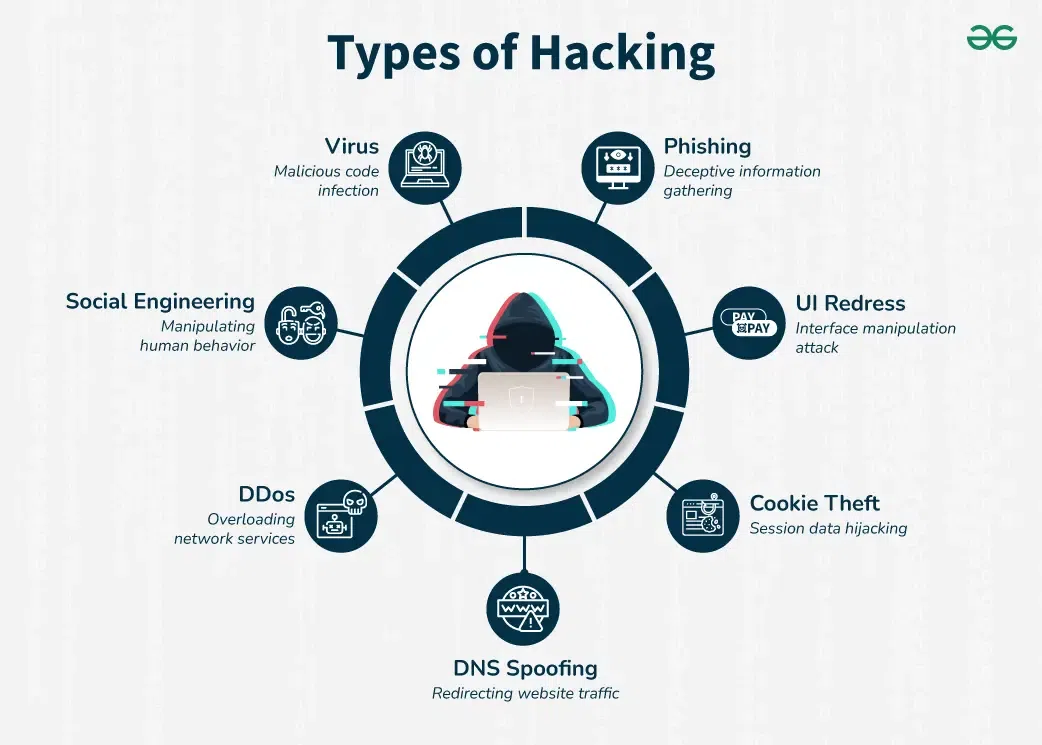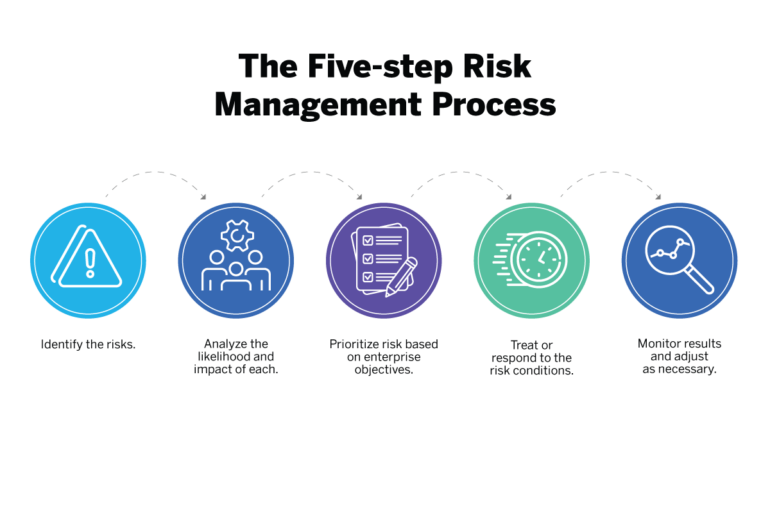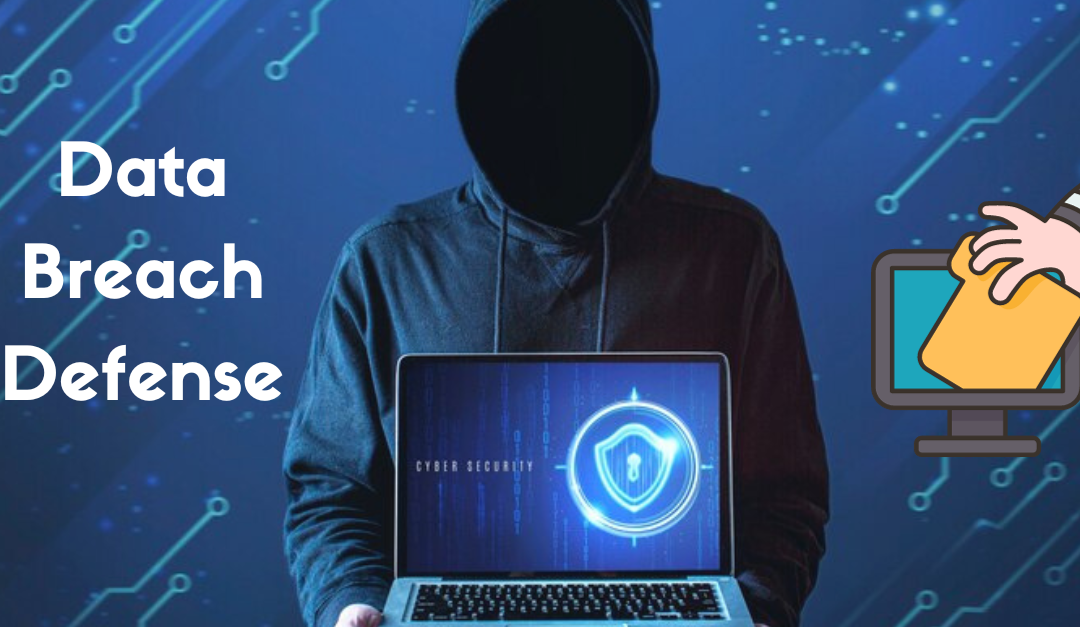Key Highlights
- Communications hijacking is a growing threat in the digital age, impacting businesses and individuals.
- Attackers leverage various methods, including email interception, VoIP hijacking, and DNS manipulation to gain unauthorized access.
- Real-world examples like the SolarWinds and Twitter Bitcoin scams highlight the devastating impact of these attacks.
- Protecting data requires a multi-layered approach, encompassing strong security measures, advanced technologies, and skilled professionals.
- Understanding the methods and implications of communications hijacking is crucial for individuals and organizations to protect their data.
- By learning from past incidents, implementing robust security measures, businesses, and individuals can mitigate the risks associated with communications hijacking.
Introduction
In today’s world, most communication happens online. With this shift, hijacking of communications is a serious threat. In this worrying trend, attackers take advantage of vulnerabilities to get unauthorized access to sensitive information. This can disrupt operations and lead to big financial and reputation issues. In 2023, there were 3,205 publicly reported data compromises that impacted an estimated 353,027,892 individuals, representing a 78% increase over 2022. The effects of these attacks can be severe, with data breaches costing businesses an average of $4.45 million in 2023, an all-time high and a 15.3% increase from 2020. As we rely more on digital communication, it’s important to keep these channels safe for both businesses and individuals. The urgency is clear, as 45% of Americans have had their personal information compromised by a data breach in the last five years.
Understanding Communications Hijacking in the Digital Age
Communications hijacking means taking control of communication channels without permission. This includes emails, websites, social media accounts, and phone networks. Unlike regular hijacking that uses force, this digital version uses tricks like malware, phishing, and DNS manipulation. These tricks help intercept and control how information is shared. The effects of these attacks can be severe, with data breaches costing businesses an average of $4.45 million in 2023, an all-time high and a 15.3% increase from 2020.
The effects of these attacks can be serious. They can lead to data breaches, identity theft, and money losses. They can also disrupt important services. As we rely more on digital communication, it’s important to keep these channels safe for both businesses and individuals. The urgency is clear, as 45% of Americans have had their personal information compromised by a data breach in the last five years.
The Basics of Communications Hijacking
At its core, communications hijacking takes advantage of weaknesses in internet communication systems. Attackers can manipulate the domain name system (DNS) using a rogue DNS server through DNS hijacking. This redirects users to fake websites that are made to steal credentials, often associated with their IP address. Another common method is session hijacking. Here, attackers take control of an active user session on a website, getting into their data and actions.
Also, attackers can stop and change information sent over networks, like emails, chat messages, and voice calls. They can do this by using unsecured Wi-Fi networks, placing malware on users’ devices, or breaking into network systems.
These attacks can vary in how advanced they are. However, they all aim to get unauthorized access to private information or to disrupt communication for bad reasons. In 2023, there were 3,205 publicly reported data compromises that impacted an estimated 353,027,892 individuals, representing a 78% increase over 2022.
How Communications Hijacking Impacts Businesses and Individuals
For businesses, a successful communications hijacking can be very damaging. A breach can mean losing sensitive information. This includes customer data, financial records, and confidential business details. As a result, businesses may face legal problems, fines, and harm to their reputation. Nearly 11 percent of all publicly traded companies were compromised in 2023.
Individuals are also at risk. Attackers often use methods like phishing and social engineering to break into personal accounts. This can lead to identity theft, unauthorized transactions, and large financial loss.
The effects of a communications hijacking are more than just the immediate harm. It can damage trust, disrupt operations, and require a lot of time and resources to recover.

The Most Common Types of Communications Hijacking
Communications hijacking includes different bad actions. Attackers are always changing their ways to take advantage of weak spots in many platforms and ways to communicate. Because of their changing tactics, it is important to understand the common techniques. This knowledge can help us create good ways to fight back. In 2023, there were 3,205 publicly reported data compromises that impacted an estimated 353,027,892 individuals, representing a 78% increase over 2022.
Now, let’s look at two main types: email interception and manipulation, and the growing risk of VoIP hijacking.
Email Interception and Manipulation
Email is still a major target. Phishing attacks are a common way that people hijack communication. Phishing uses fake emails that look like real ones. These emails trick you into giving away sensitive information like passwords, credit card numbers, or personal details. In 2023, 35% of malware was delivered via email, and more than 94% of organizations reported email security incidents.
Another common method is email interception. Here, attackers get unauthorized access to email accounts. This lets them watch conversations, steal information, and pretend to be the account owner for harmful reasons.
To protect against email hijacking, you need a few steps:
- Strong passwords and two-factor authentication are needed to keep email accounts safe.
- Regularly updating software and security patches can help fix vulnerabilities.
- Teaching users about phishing tactics is important. It’s also essential to be careful when opening suspicious emails.
VoIP Hijacking: An Emerging Threat
With more people using Voice over Internet Protocol (VoIP), VoIP hijacking is becoming a serious problem. Attackers can take advantage of weaknesses in VoIP systems. They can get unauthorized access to conversations, listen in on sensitive information, and even change calls for dishonest reasons.
The results can be very serious for businesses that depend on VoIP for communication. They can face financial losses, spying issues, and harm to their good name. In fact, over 60% of companies that suffer a cyber attack close down within six months.
To fight this growing problem, both businesses and individuals need to focus on safe VoIP settings. They should use strong passwords and put in place robust detection and prevention measures. This will help keep their communications safe. In 2023, 77% of internet users worldwide worried about personal and sensitive data being stolen, emphasizing the importance of these security measures.
Real-World Examples of Communications Hijacking
The risk of communications hijacking is very real. There are actual cases showing how harmful it can be. These events remind us how crucial strong cybersecurity is in today’s connected world.
Let’s look at two well-known examples: the SolarWinds hack and the Twitter Bitcoin scam from 2020.
Case Study: The SolarWinds Hack Revisited
The 2020 SolarWinds hack is a clear example of how dangerous communications can be hijacked. Russian hackers put harmful code into SolarWinds’ Orion software updates. This affected a key part of the supply chain that many organizations trusted. This included government agencies and Fortune 500 companies. The attack impacted nearly 18,000 organizations worldwide.
The attack had serious effects. It gave hackers a way to get into the networks of many victims. This also put sensitive data at risk and could disrupt important systems, leading to potential cyber threats. The scope of the attack showed how important it is to improve supply chain security and conduct a thorough investigation of vulnerabilities. We need a strong plan for finding and responding to threats quickly. The total cost of the SolarWinds breach is estimated to be $100 billion.
The SolarWinds incident reminds us that threats are always changing. It shows the need for constant watchfulness, strong security actions, and teamwork among organizations. This way, we can fight against tricky cyberattacks.
Analysis: The Twitter Bitcoin Scam of 2020
In recent years, social media platforms have become easy targets for communication hijacking. The Twitter Bitcoin scam in 2020 showed how vulnerable online communication can be. In this incident, attackers got unauthorized access to important Twitter accounts. This included accounts belonging to Elon Musk, Bill Gates, and Apple.
They misused these accounts to promote a cryptocurrency scam. They promised followers that any bitcoin sent to a certain address would be doubled. The scam resulted in 383 Bitcoin transactions being sent to the attackers’ account, totaling approximately 12.86 BTC (US$117,000 at the time). Many people fell for this scam, resulting in big financial losses.
The Twitter Bitcoin scam highlights the need for strong security on social media sites. Users must be aware of phishing and social engineering tricks. Social media companies must act quickly to find, control, and reduce such incidents. In the aftermath of the attack, Twitter’s stock price fell by 4% within a day.
Protecting Your Data from Hijackers
In today’s digital world, keeping data safe is very important. This needs a strong plan to deal with changing tactics from cybercriminals. Using different technology, creating good policies, and training employees frequently is key.
Both organizations and people must focus on security. They should know that acting early is vital to reduce risks and lessen the effects of possible breaches.
Essential Security Measures for Every Organization
Implementing good security measures is necessary for every organization today. Following best practices can help build strong security, reduce vulnerabilities, and protect against attacks.
Here are some important security measures:
- Firewall: This is a basic security tool. It checks network traffic and stops unauthorized access to systems and data.
- Encryption: This keeps data safe when it’s moving or stored. It makes the data unreadable to anyone who shouldn’t see it.
- Multi-factor authentication (MFA): This adds extra security. Users must provide different forms of ID, like a password and a one-time code, to get in.
- Regular Security Audits: These are regular checks to find and fix potential vulnerabilities. They help make sure security remains effective.
Advanced Technologies in Preventing Data Breaches
Using advanced technologies, along with basic security measures, can greatly help an organization stop data breaches and protect sensitive information. These technologies act as a shield. They look at network traffic, how users behave, and any threats. This allows them to find and stop attacks before they do harm.
Here are some important technologies:
- Web Application Firewall (WAF): This tool filters out bad traffic aimed at web applications. It protects against different attacks like cross-site scripting (XSS) and SQL injection.
- Security Information and Event Management (SIEM): This gathers and studies security logs from various places. It gives a clear view of an organization’s security and helps find and respond to threats quickly.
- User and Entity Behavior Analytics (UEBA): This checks how users and devices act to spot unusual behaviors or threats. By identifying standard patterns, UEBA can catch strange activities that might mean an attack is happening.

The Role of Data Professionals in Mitigating Risks
Data professionals are very important in this area. They do more than just manage and analyze data. They also work hard to keep it safe and reliable. These experts lead the way in putting in place, keeping up, and improving security steps to protect important information.
Their job is not just about technical skills. They also offer advice, teach others about new threats, and help build a security-focused culture in companies. They connect the complex technical details with the needs of the business.
Bridging the Skills Gap in Cybersecurity
The world of cybersecurity is changing fast. This change requires a skilled workforce to fight more complex threats. To close the skills gap in cybersecurity, we need experts in network security, ethical hacking, and data encryption. These skills help stop attacks like IP hijacking and BGP manipulation.
Organizations and schools must work together to solve this problem. They should invest in cybersecurity training programs, promote certifications, and support ongoing learning. This approach helps professionals gain the knowledge needed to handle these changing threats.
By focusing on cybersecurity education and training, organizations can build a team ready to protect against new dangers and keep valuable data safe.
Dataforce’s Approach to Securing Top Talent
Dataforce knows how important skilled data professionals are for protecting information. We believe that finding and keeping talented people is key to creating a strong cybersecurity system. Our plan includes paying good salaries, offering chances for people to grow, and making a workplace that promotes new ideas, teamwork, and ongoing learning.
We put a lot of effort into giving our team the best tools, training, and resources to stay ahead in cybersecurity, including access to top security solutions like Microsoft. They can join industry events and have a chance to work with experts. By giving our team the knowledge and tools they need, we can set up robust detection and prevention strategies. This helps to effectively shield data from cybercriminals.
Learning from the Past: Historical Hijacking Incidents
Looking at past hijacking events helps us understand attack methods, weaknesses, and how defenses have changed over time. Each event teaches a rough lesson. It shows us how to improve security, adjust our response plans, and take steps to avoid threats before they happen.
By learning from previous errors, groups can expect new dangers, fix their weaknesses, and handle the tricky world of cybersecurity with more awareness and readiness.
Lessons from the Past: Preventing Recurrence
Every successful attack reveals weaknesses and shows how future attacks can happen. By looking at past events, we can find patterns in how attacks happen. This includes the weak spots that were used and the problems within organizations. For example, a data breach from the previous year may have started due to a phishing campaign that targeted workers.
When we understand how the attacker got past security, organizations can strengthen their protections. They can set up multi-factor authentication and teach employees to spot phishing attempts.
It’s important to learn from previous mistakes. This is not about blaming anyone but about gathering useful information to stop similar events from happening again. We need a culture of ongoing improvement. Security, like Imperva technologies, should not be something we set and forget; it must be an ongoing effort to adapt, refine, and prevent threats.
The Evolution of Security Measures Over Time
Cyberattacks have evolved significantly over the years, pushing the boundaries of technology and exploiting new vulnerabilities. The early days of the internet witnessed simpler attacks like DDoS, but today, sophisticated techniques such as ransomware, zero-day exploits, and AI-powered attacks are the norm.
Security measures have had to evolve in tandem, from basic firewalls and antivirus software to advanced solutions like threat intelligence platforms, user behavior analytics, and automated incident response systems. The following table highlights key developments in attack and defense strategies over time:
|
Period |
Attack Trends |
Security Measures |
|
Early 2000s |
Simple DDoS attacks, virus infections |
Firewalls, antivirus software, basic intrusion detection systems |
|
Mid 2000s |
Rise of phishing, SQL injection attacks |
Web application firewalls, stronger authentication mechanisms |
|
Late 2000s |
Botnets, targeted attacks |
Behavioral analysis, sandboxing, reputation-based security solutions |
|
2010s |
Advanced Persistent Threats (APTs), ransomware |
Threat intelligence platforms, advanced encryption, incident response teams |
|
2020s |
AI-powered attacks, sophisticated phishing |
AI-driven security solutions, zero-trust security models, user behavior analytics |
The relentless pace of technological advancement necessitates continuous innovation in security. As attackers become more sophisticated, security professionals must remain vigilant, adapting their strategies, and implementing cutting-edge solutions to stay ahead of the curve.
Conclusion
In today’s digital world, keeping your data safe from communications hijacking is very important. It’s essential to understand how this threat affects both businesses and people. This knowledge helps us set up good security measures. We can learn from real cases like the SolarWinds hack and the Twitter Bitcoin scam to get better at stopping these kinds of attacks. Data professionals are key in lowering risks. Companies must also invest in new technology to avoid data breaches. By closing the skills gap in cybersecurity and learning from past events, we can strengthen our defenses to protect our important data.
References
- https://www.newspapers.com/newspage/400190481/
- https://www.bbc.com/news/technology-35995893
- https://www.computerweekly.com/
- https://archive.org/details/computerethicsca00fore/page/74
- https://proofpoint.my.site.com/community/s/
- https://www.latimes.com/archives/la-xpm-1990-09-24-ca-1081-story.html
- https://www.jpost.com/operation-protective-edge/watch-hamas-hacks-into-channel-10-broadcast-362767
- https://x.com/intent/tweet
- https://archive.org/details/whoownsinformati00bran

